The Amiga 4000 #2 motherboard has been repaired enough to almost boot correctly, but there is still a problem. There appears to be a stuck bit on the custom chips bus. Let’s continue with the diagnosis.
Finding The Problem
We know that the data line 6 to Paula is not working. This is because Paula generates the RS232 output I was observing and bit 6 was stuck there. What confused me to start with is the data bus for Paula started at bit 16. Then I realised the Paula is using the top half of the 32bit bus, so in reality the problem should be with bit 22.
Unfortunately, in my haste to diagnose things, I also removed U891 which controls the lower data bus for the Fast RAM and often fails with battery damage. I’d already repaired traces around it. I lost a pad in the process because they were weak from the leaking battery.

Using amigapcb.org we can see the route that trace takes, the red trace here. I haven’t shown all of it, just the significant part for this post.
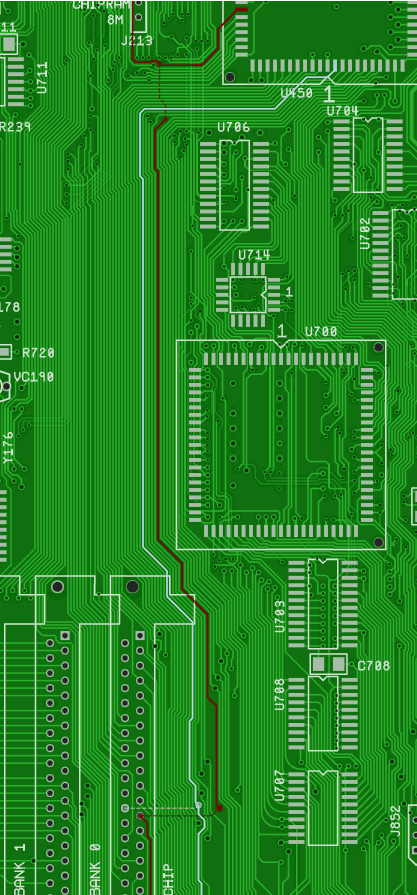
The very long vertical part is broken, I can’t see where it is broken, but there is no continuity between the vias. This would explain things, at the bottom is the Bridgette chip. This is a custom chip that handles the address/data buffering for the Chip RAM and other custom chips. At the top is Alice (AGA chipset), Lisa (video), and Paula (audio, serial, and floppy disk controller).
I fixed this using a fine patch wire on the underside between the two vias and tried again.
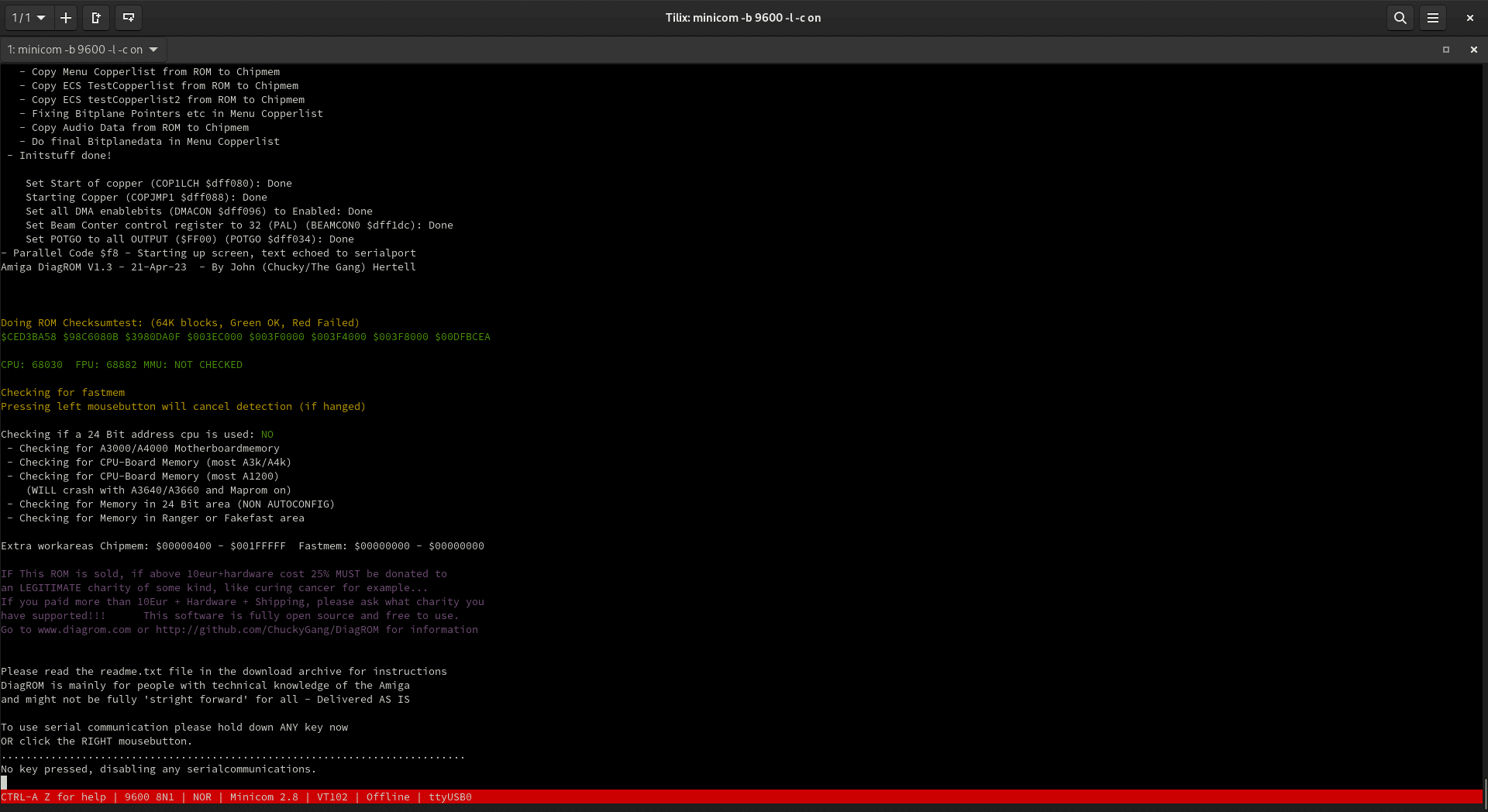
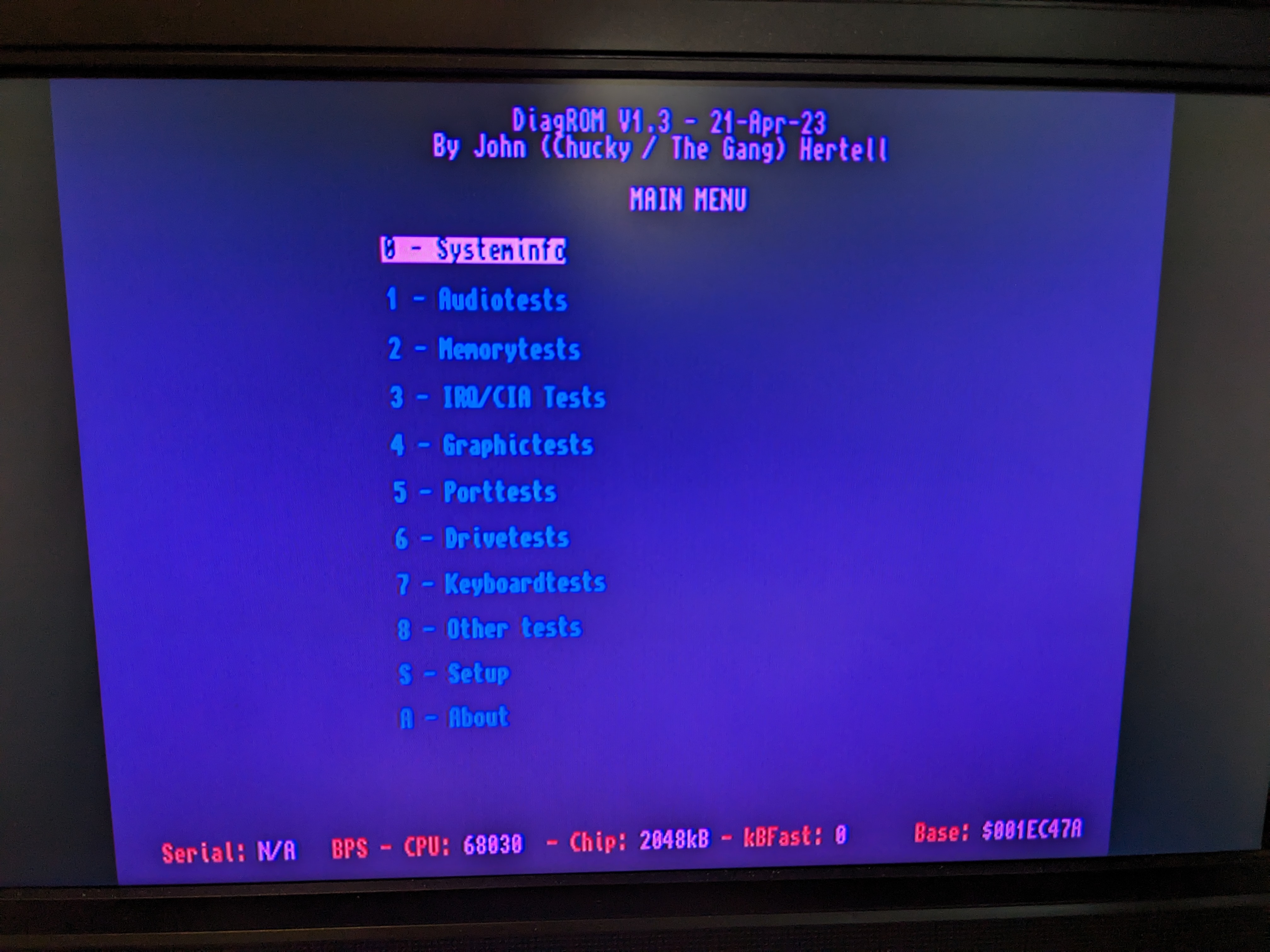
That is much better, we appear to have a working chipset. But everything is still purple!
Purple Reign
DiagROM has a graphics test which can show the RGB output, so that was the first thing I tried.

Well, that explains the purple. This is supposed to have a bar for red, one for green and one for blue. The green one is completely missing. This means we are completely missing the analogue green output.
Going back to amigapcb.org we can see that this is the path it takes.
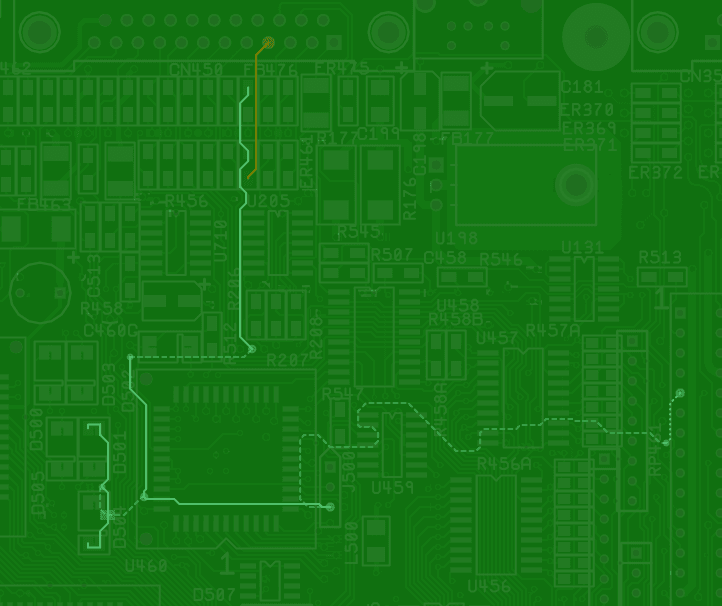
The longest of the vertical green traces there, that is broken too. Which explains why there is no green. As before, this will need patching, but unfortunately, I cannot hide this on the bottom of the board, there is no via at the top to attach it to. But I did make this as small as possible.
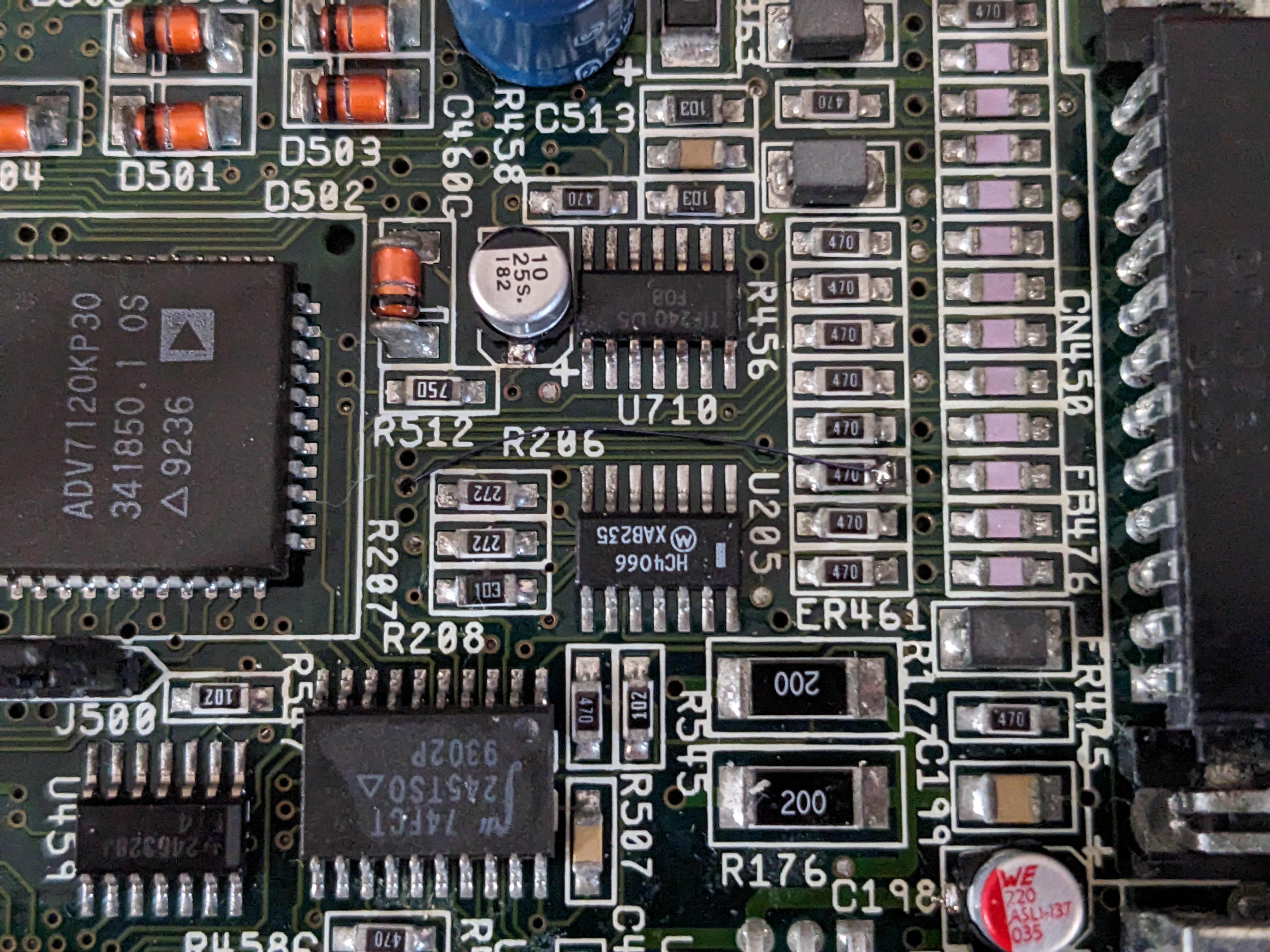
Let’s try DiagROM again…
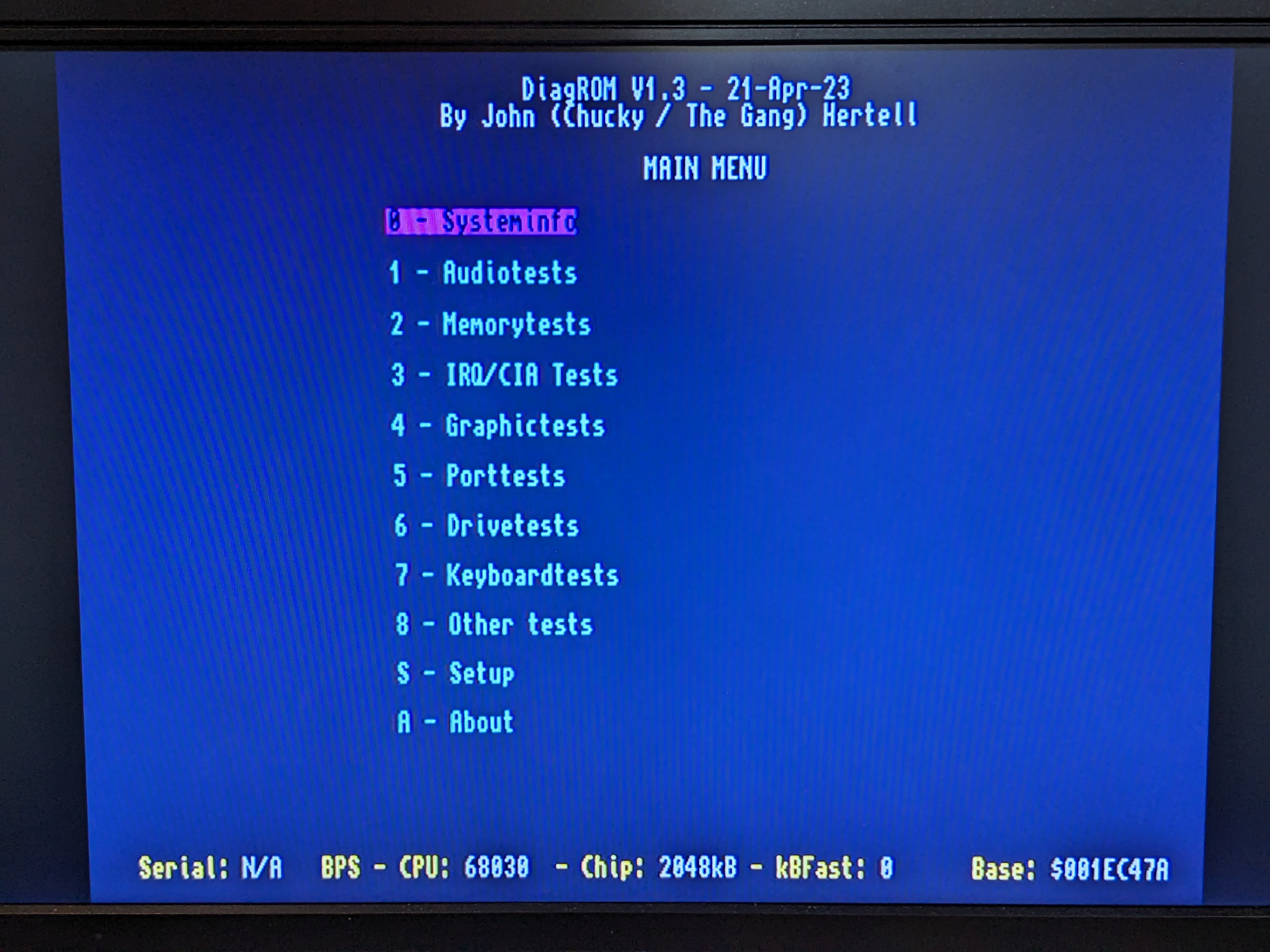

That’s more like it, we have the full RGB spectrum!
Getting Faster
Now that we have the main functionality of the board working, it is time to add the Fast RAM back. New sockets were soldered on, as was the original U891 chip. Before fitting them, I coated the exposed copper traces in clear nail varnish to protect them. I could have used a UV cured mask repair, but this requires removing the old mask first.

Unfortunately, the machine suddenly decided that booting was no longer an option. DiagROM did not respond. It looks like the act of removing and reinstalling U891 was the straw that broke the camel’s back and actually caused the problem I was afraid of.
I removed the chip again, and some more of the weaker pads fell away in the process.
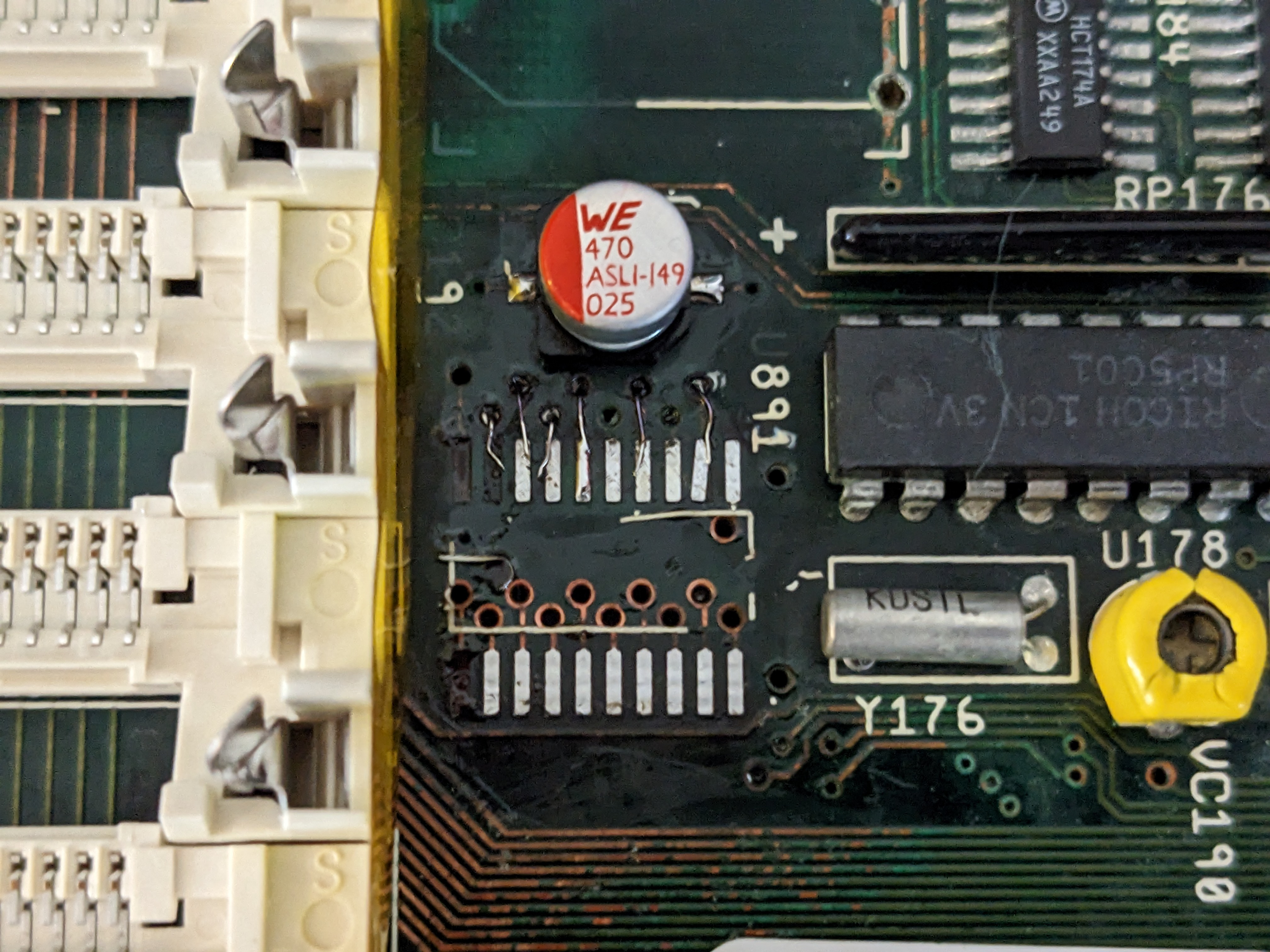
I’m not too concerned about this, it will be easy to repair. But it is a pain, especially since I did not have a spare 74F245 to replace it. I had to order one in.
PSUs
I have a known-good PSU inside Amiga 4000 #1 and an unknown state for Amiga 4000 #2. Looking at the PSU #1 I observed that the fan is at a wonky angle, and the motherboard connector appears to have been spliced. My guess is: The guts have been replaced.
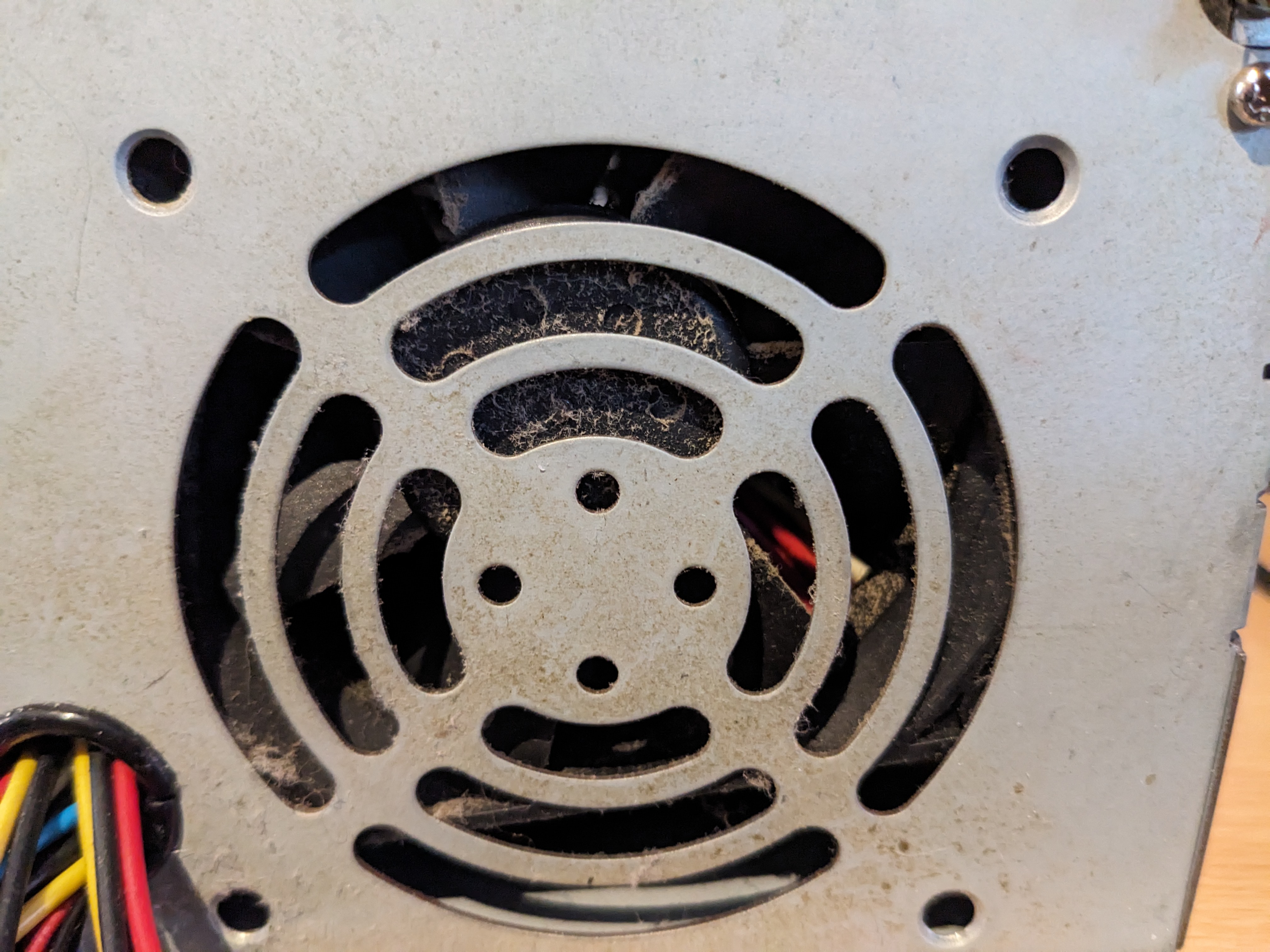
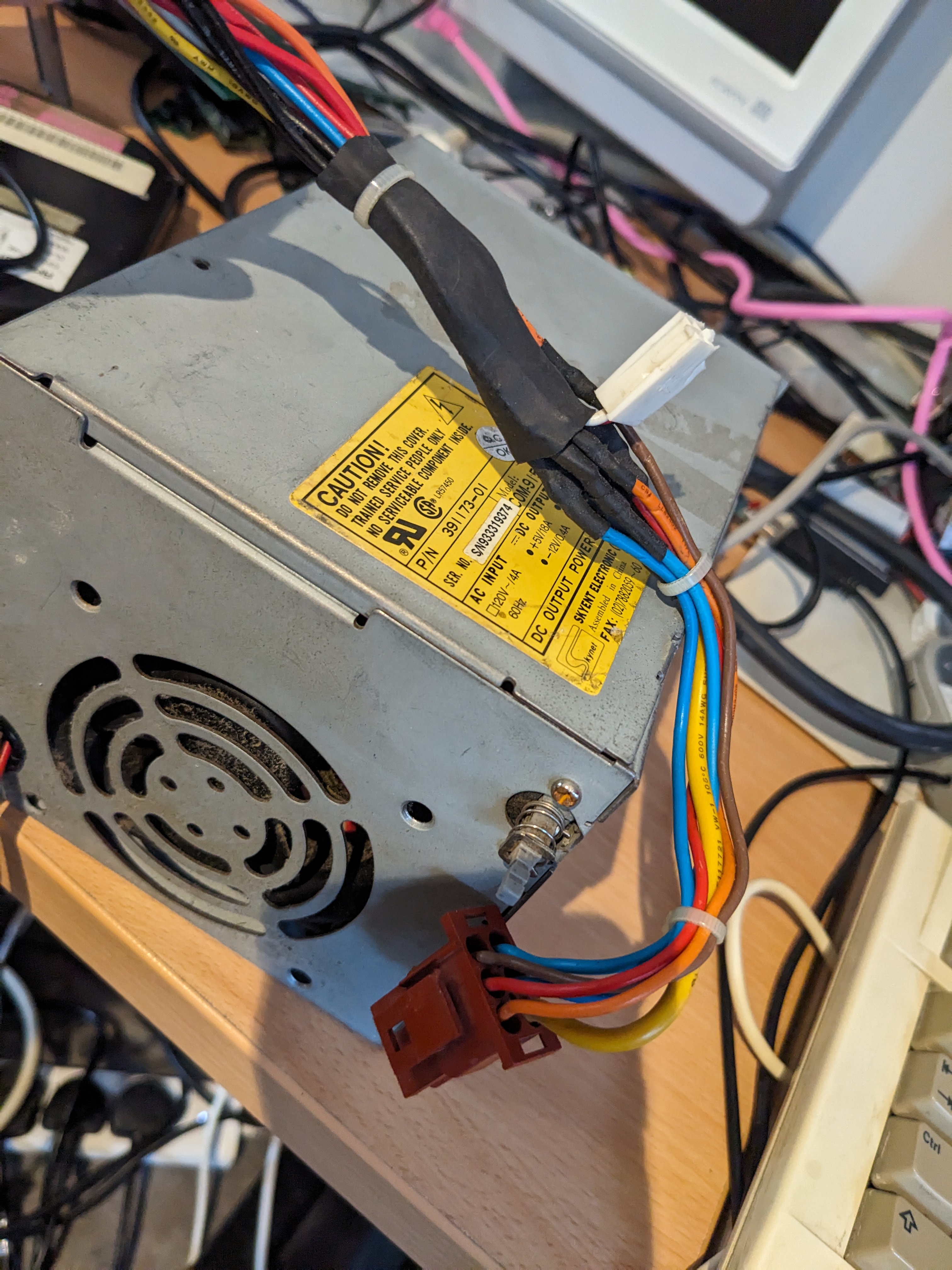
Opening it up, I can see a PSU board in there that I do not recorgnise.
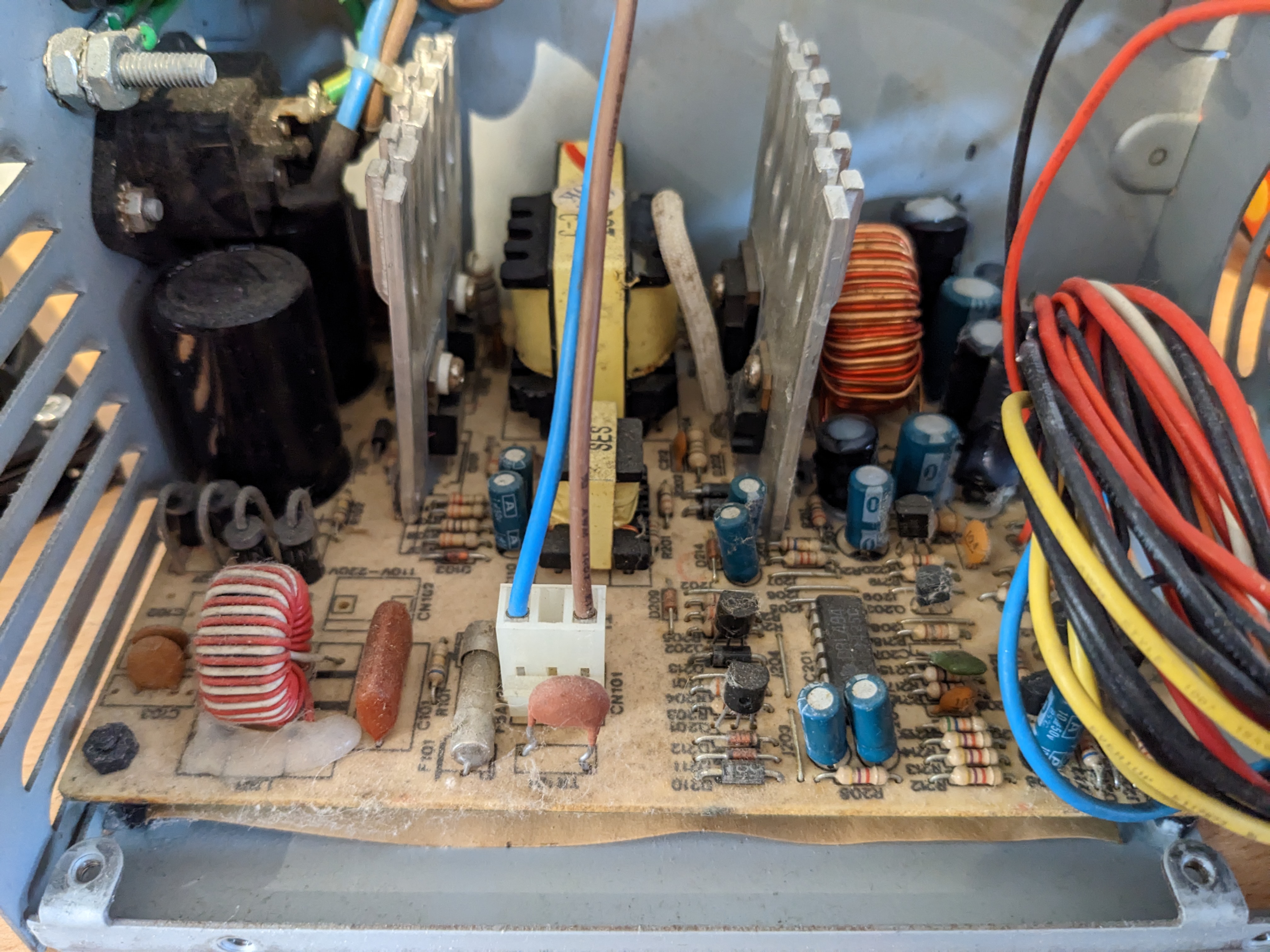
It is sitting on some plastic risers that appear to have been glued down (the glue failed) but it is snug enough in there that it hasn’t moved. The fan was at a funky angle because there isn’t enough room for a 25mm wide fan in there. I’m going to replace it with a 15mm one which should fit, and I’ll see if there is a way of improving the mounting.
As for PSU #2, this is a stock LiteOn A4000 PSU. This is after I blew out loads of dust.
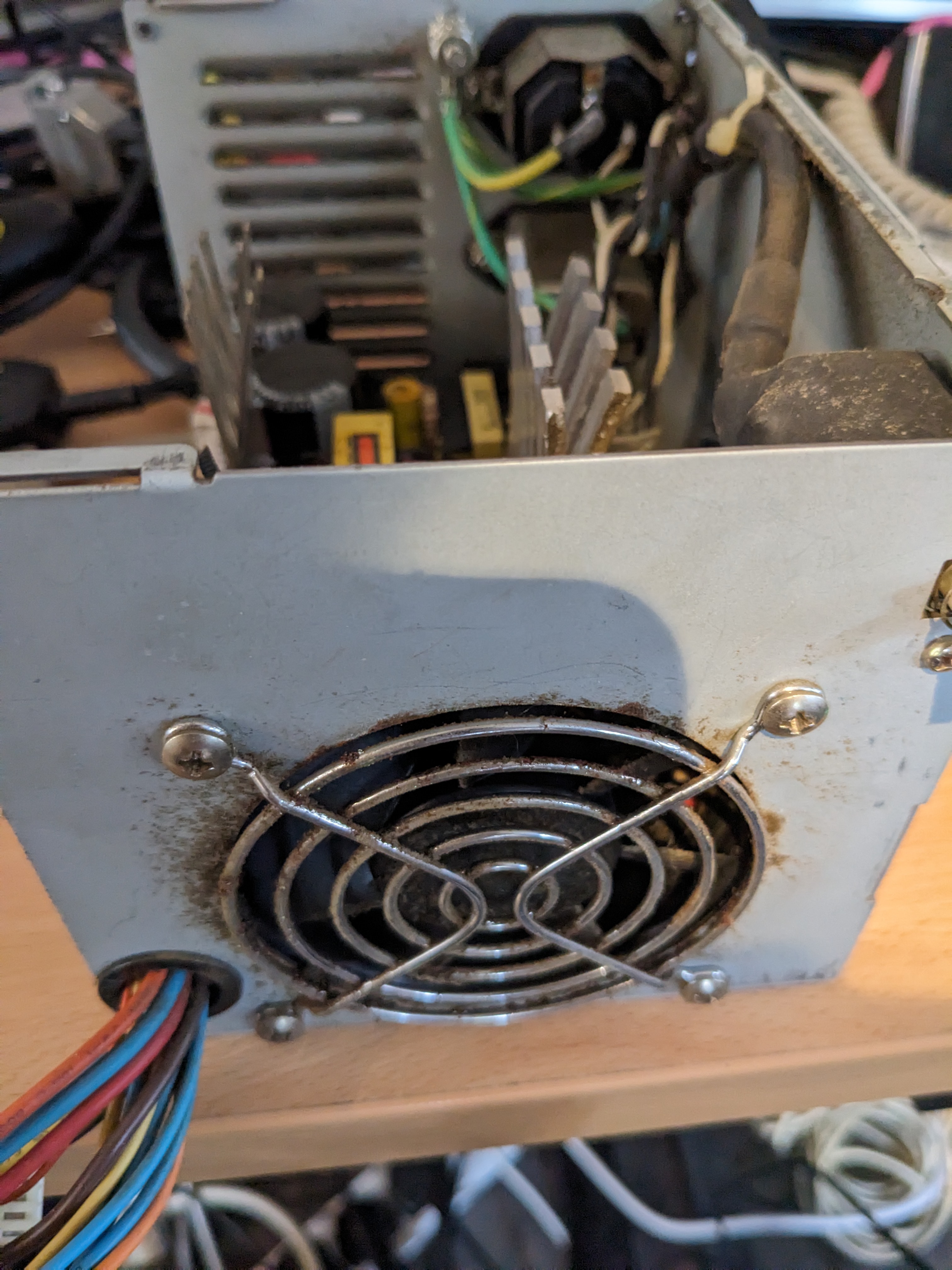
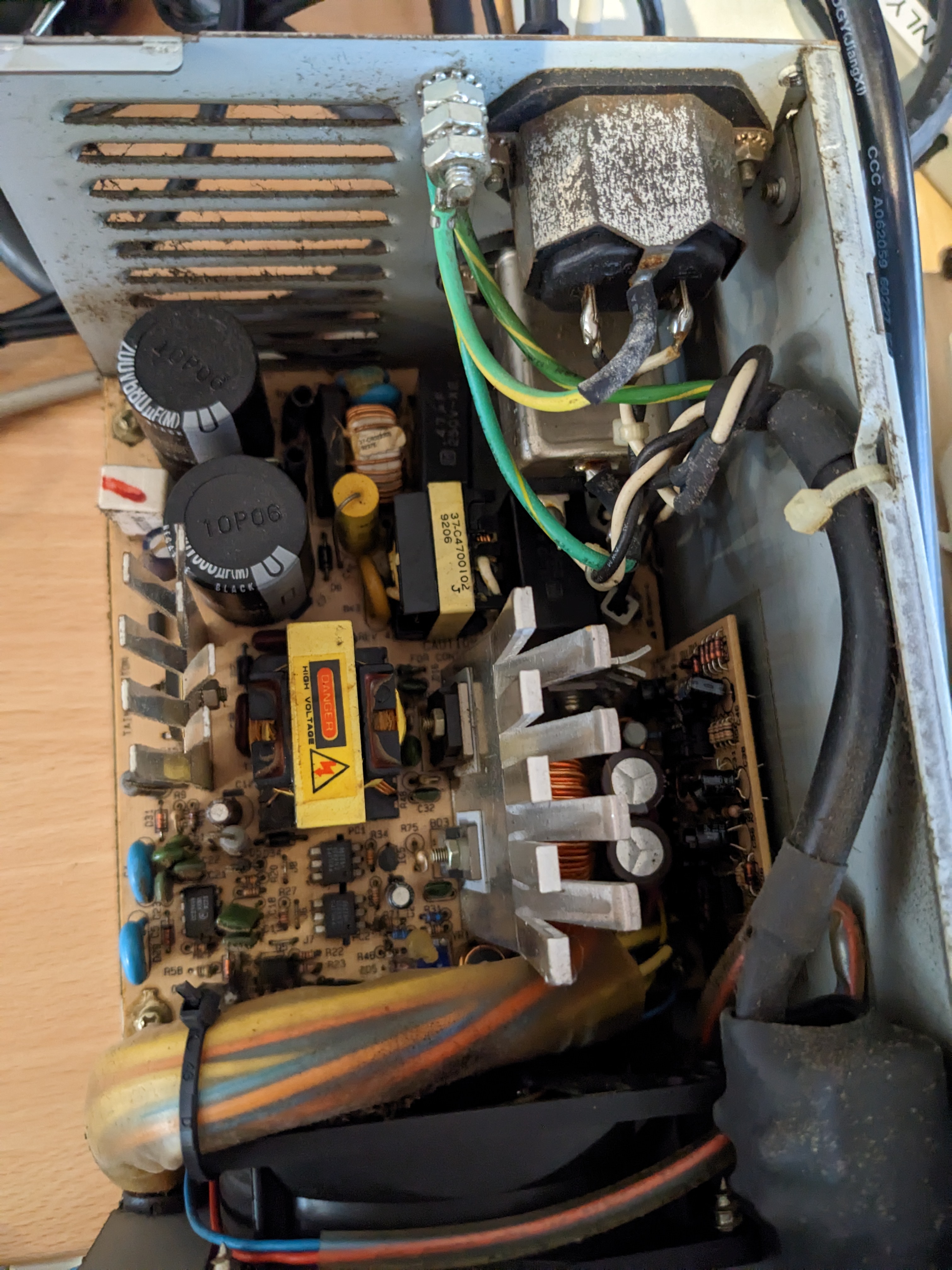
I attempted to power it on with an old hard drive for load so that I could measure the voltages. It was barely measuring 1v out on either rail. Coupled with the fact that the power switch sounds like the live and neutral are engaging separately, I will replace this one with an SFX PSU in a 3D-printed mount as outlined in this blog post.
Next Steps
I’m determined to finally get the Fast RAM area working, which will just about complete the work on the motherboard. I will also work on getting two good condition power supplies ready. I can then finally work on the cases.

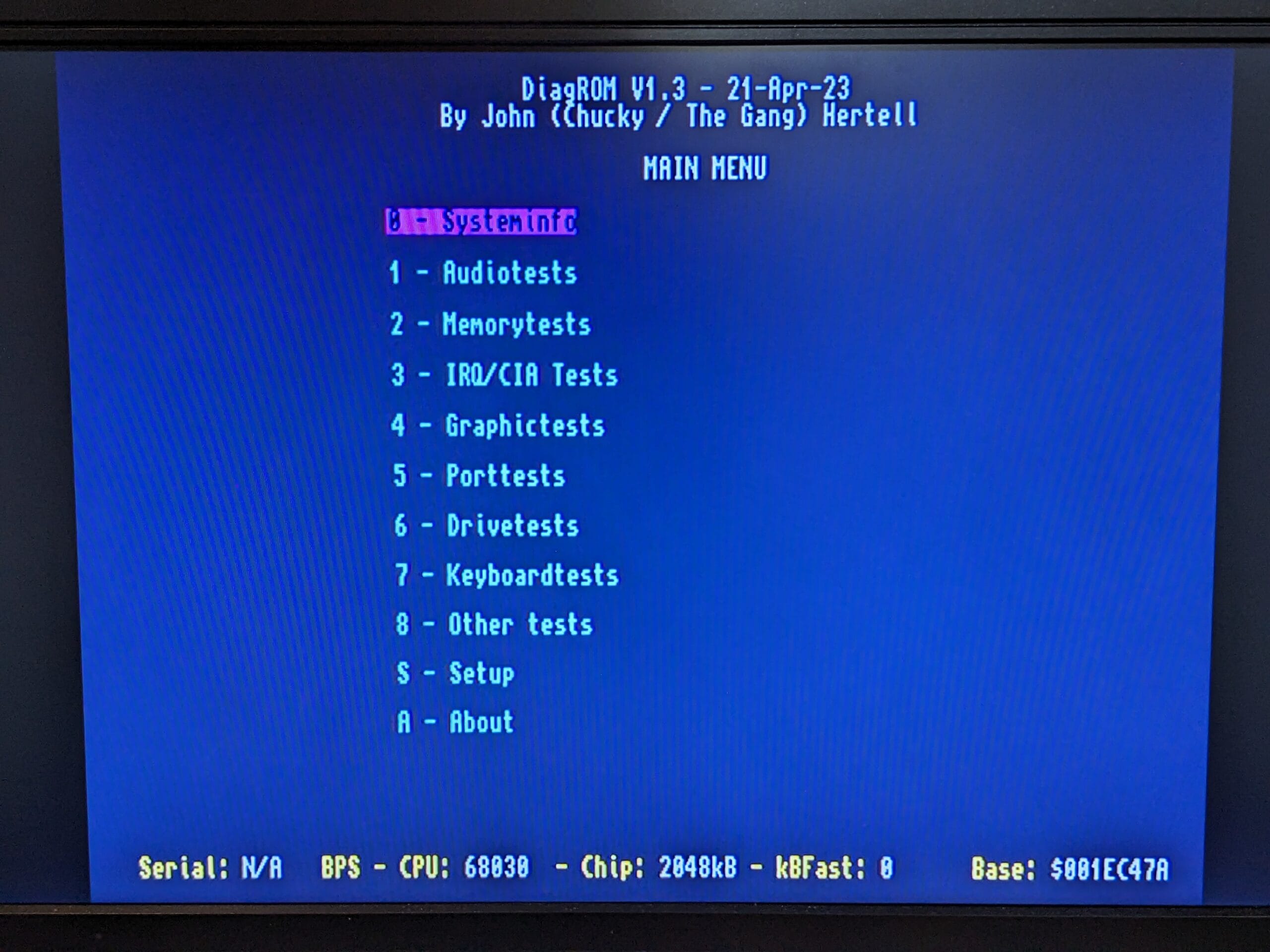
Leave a Reply